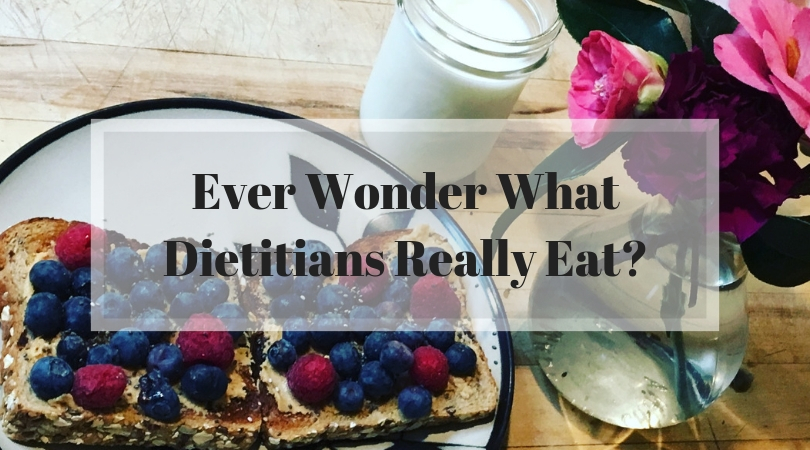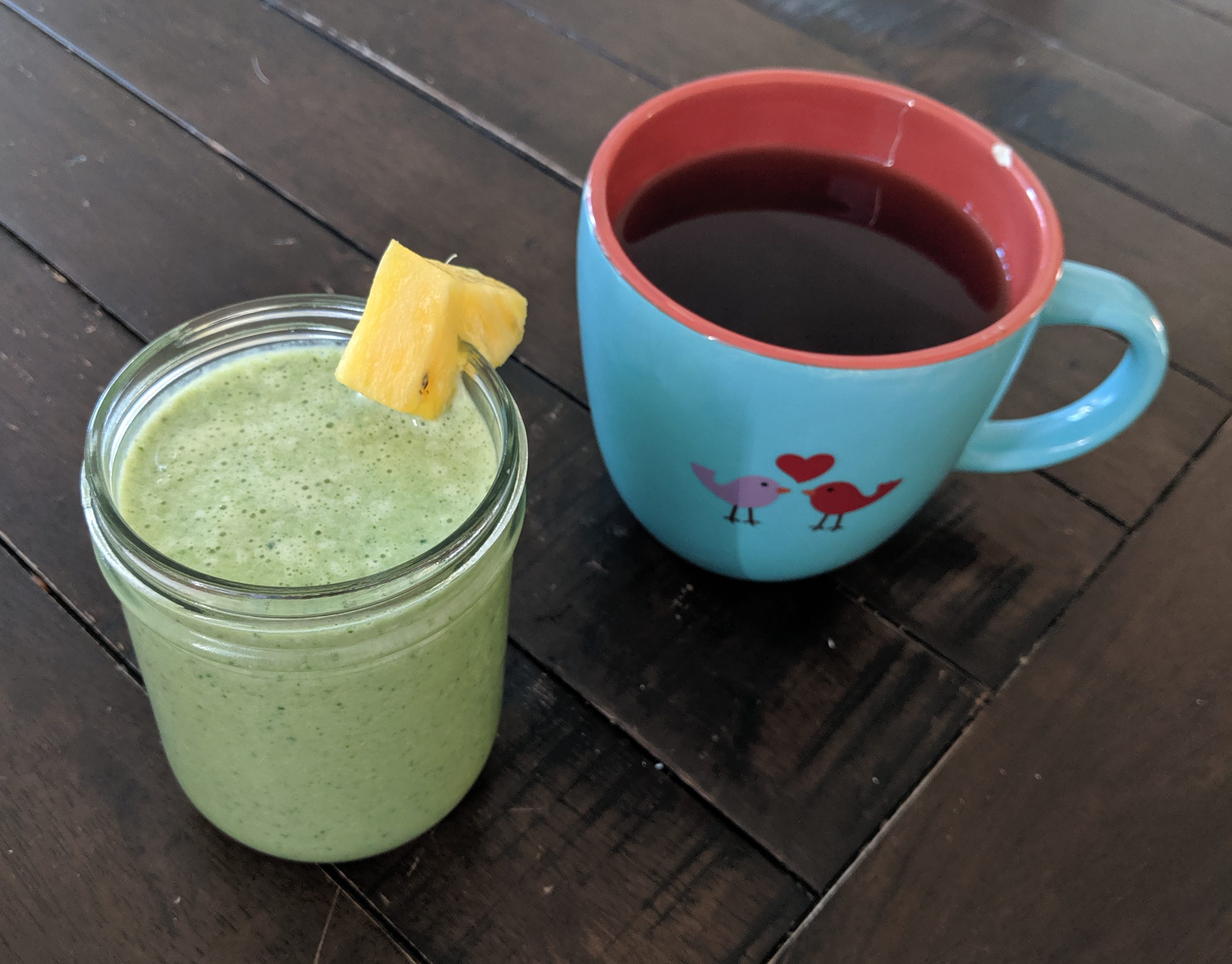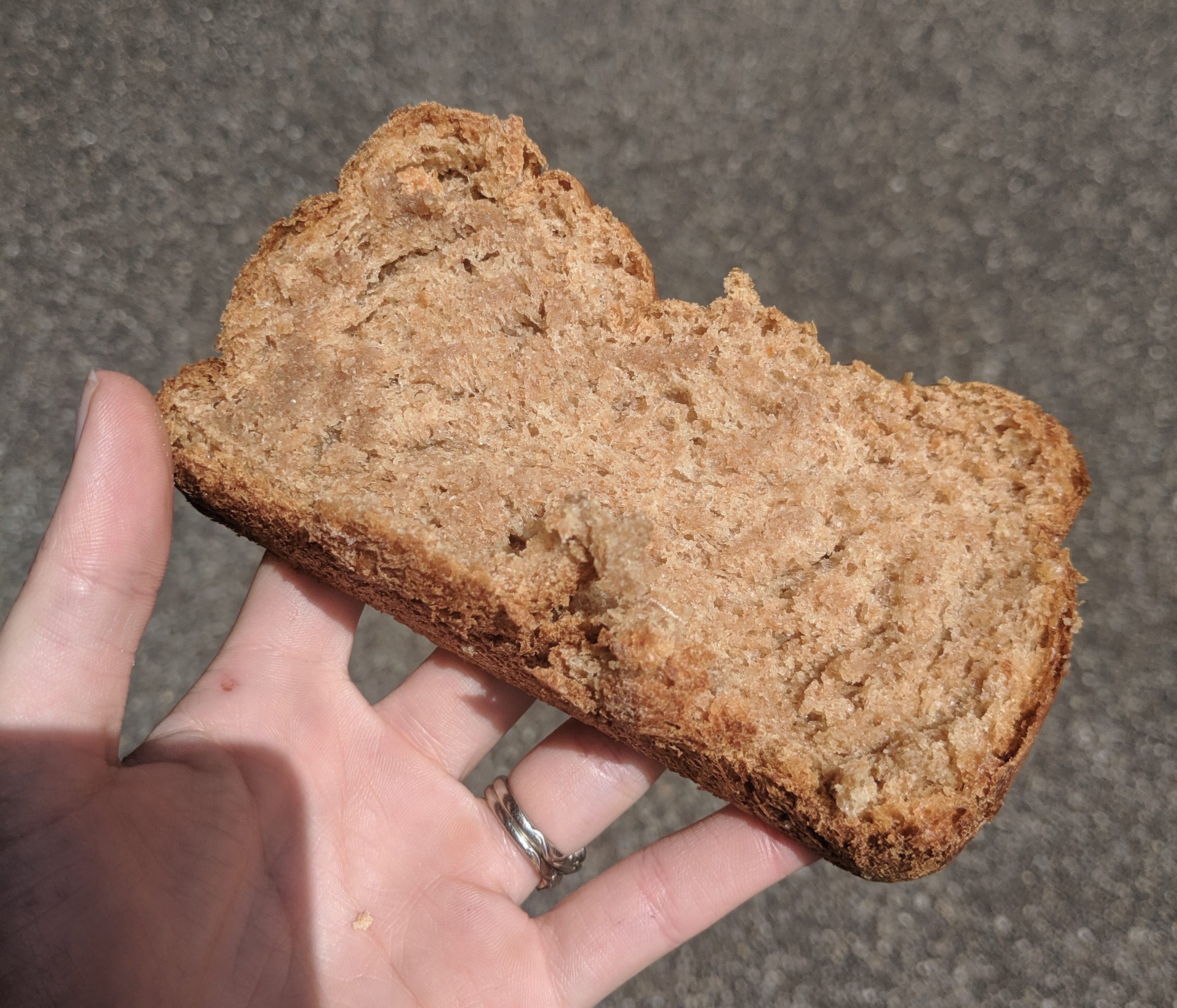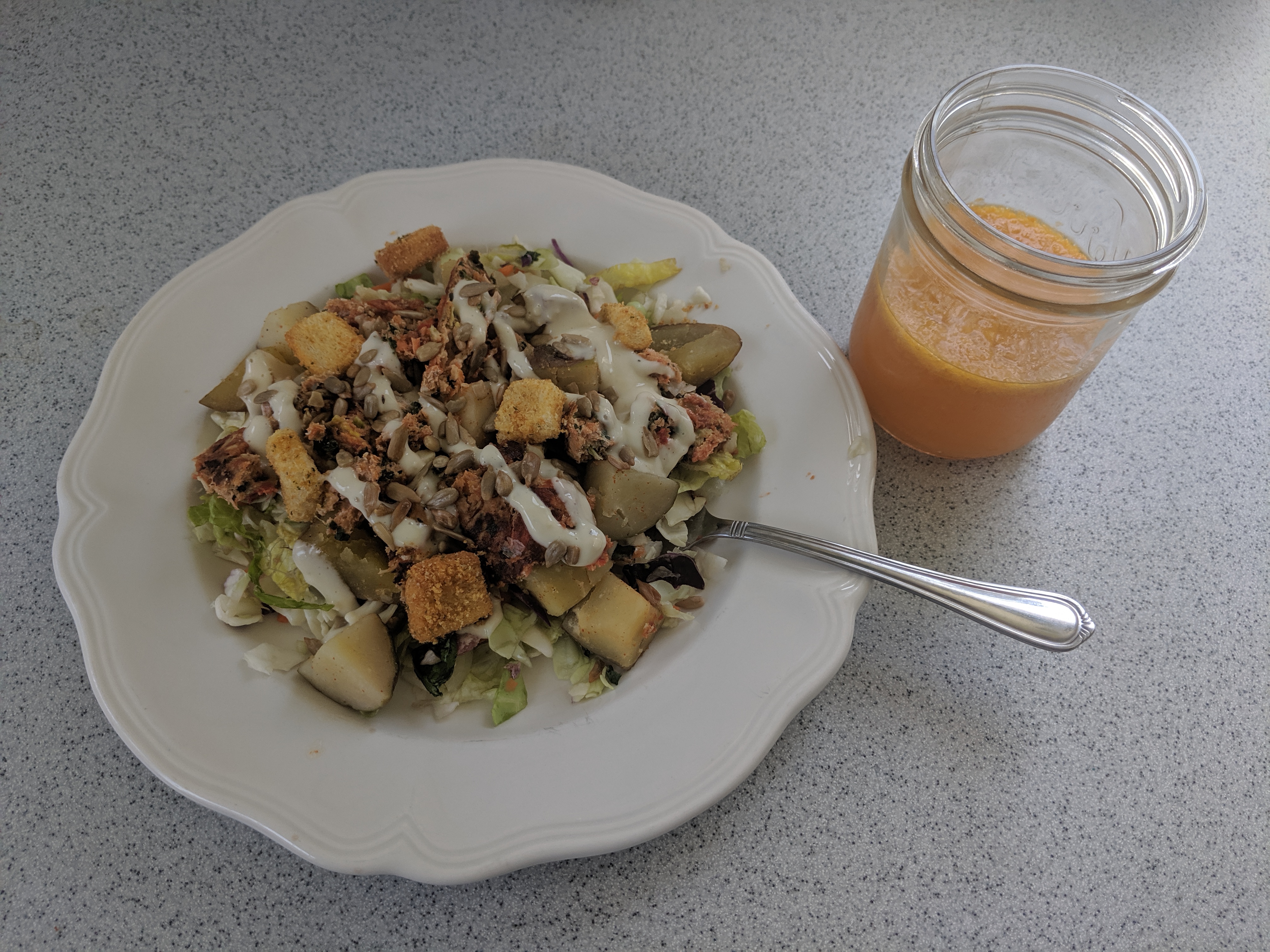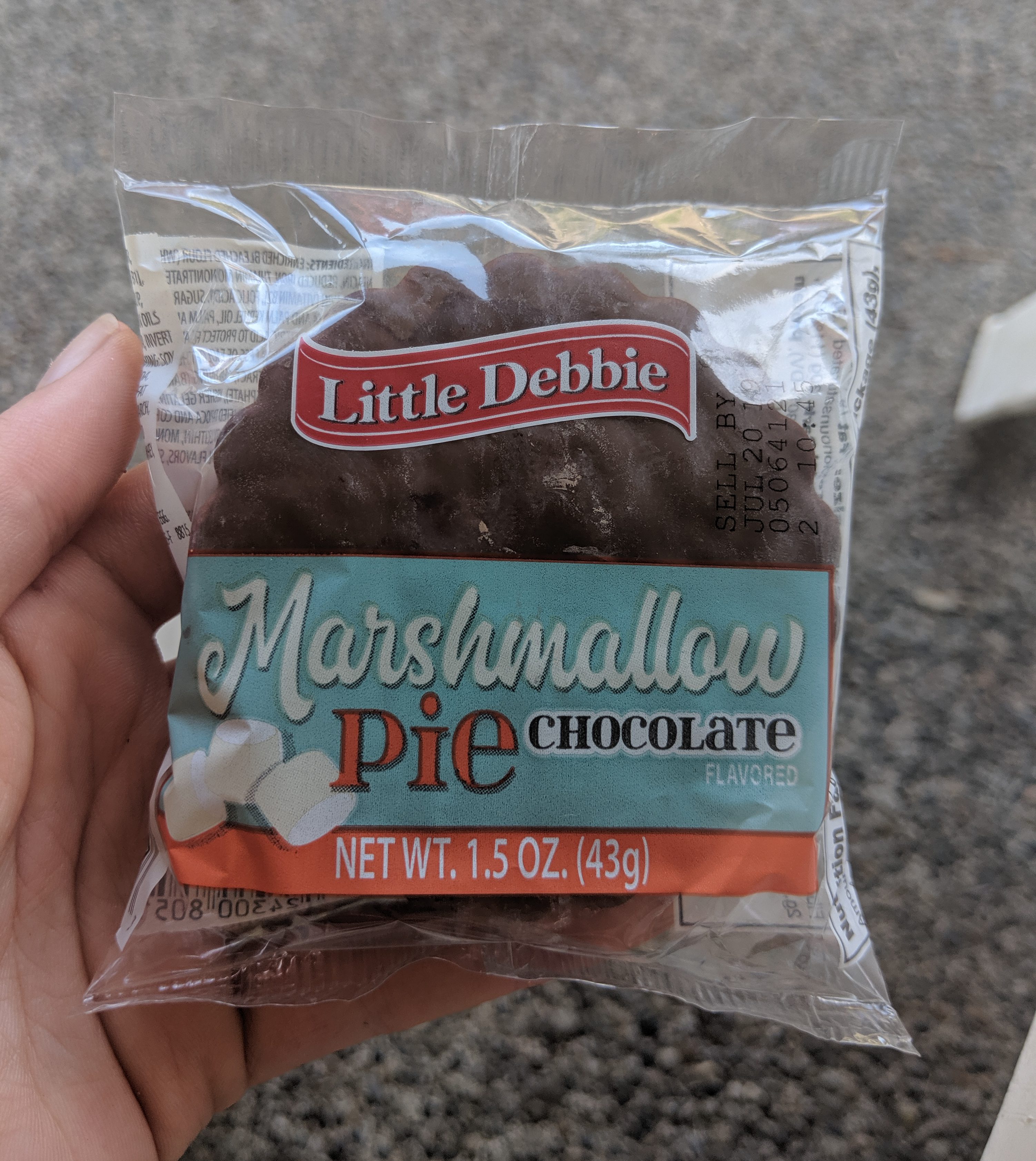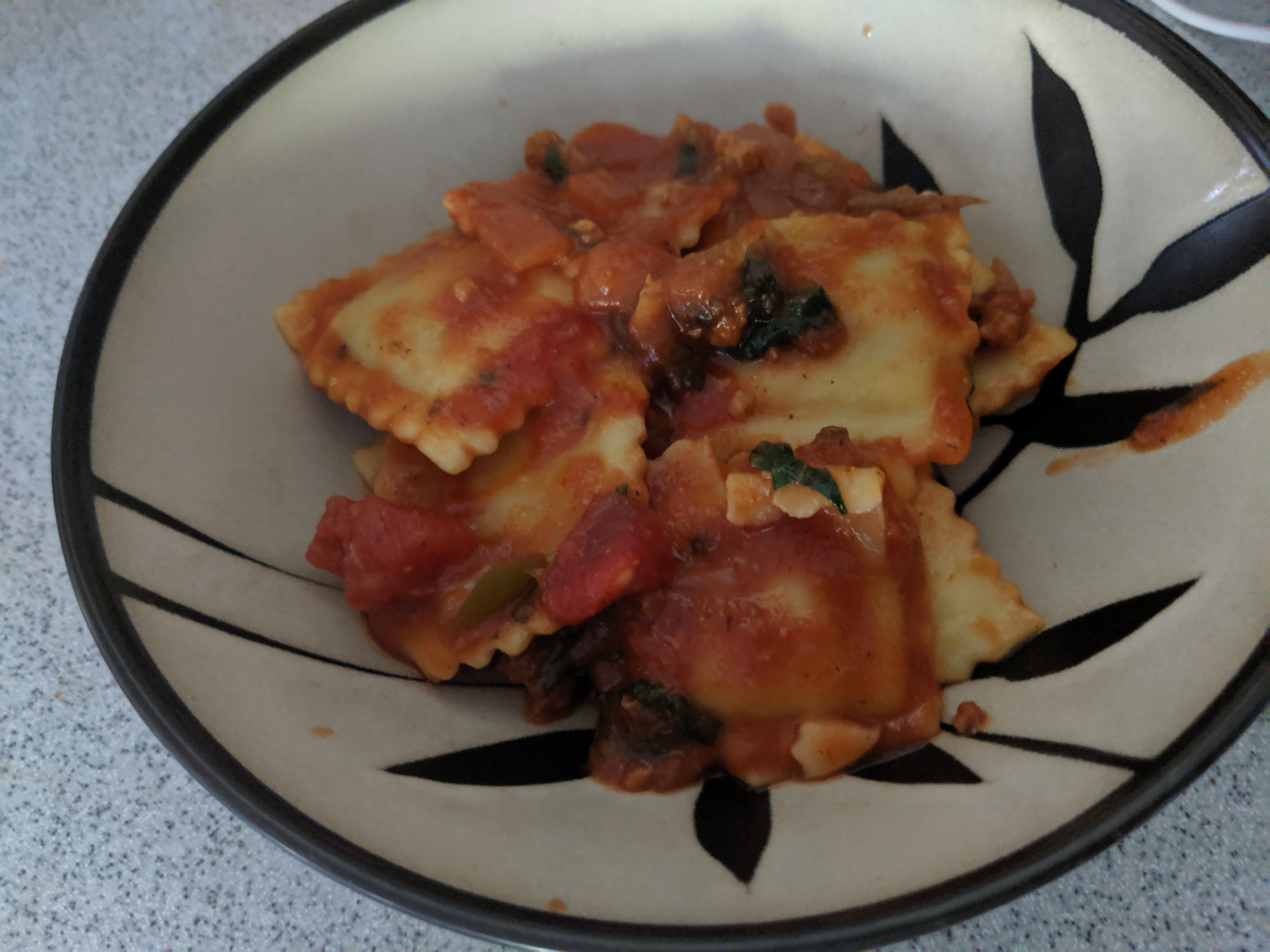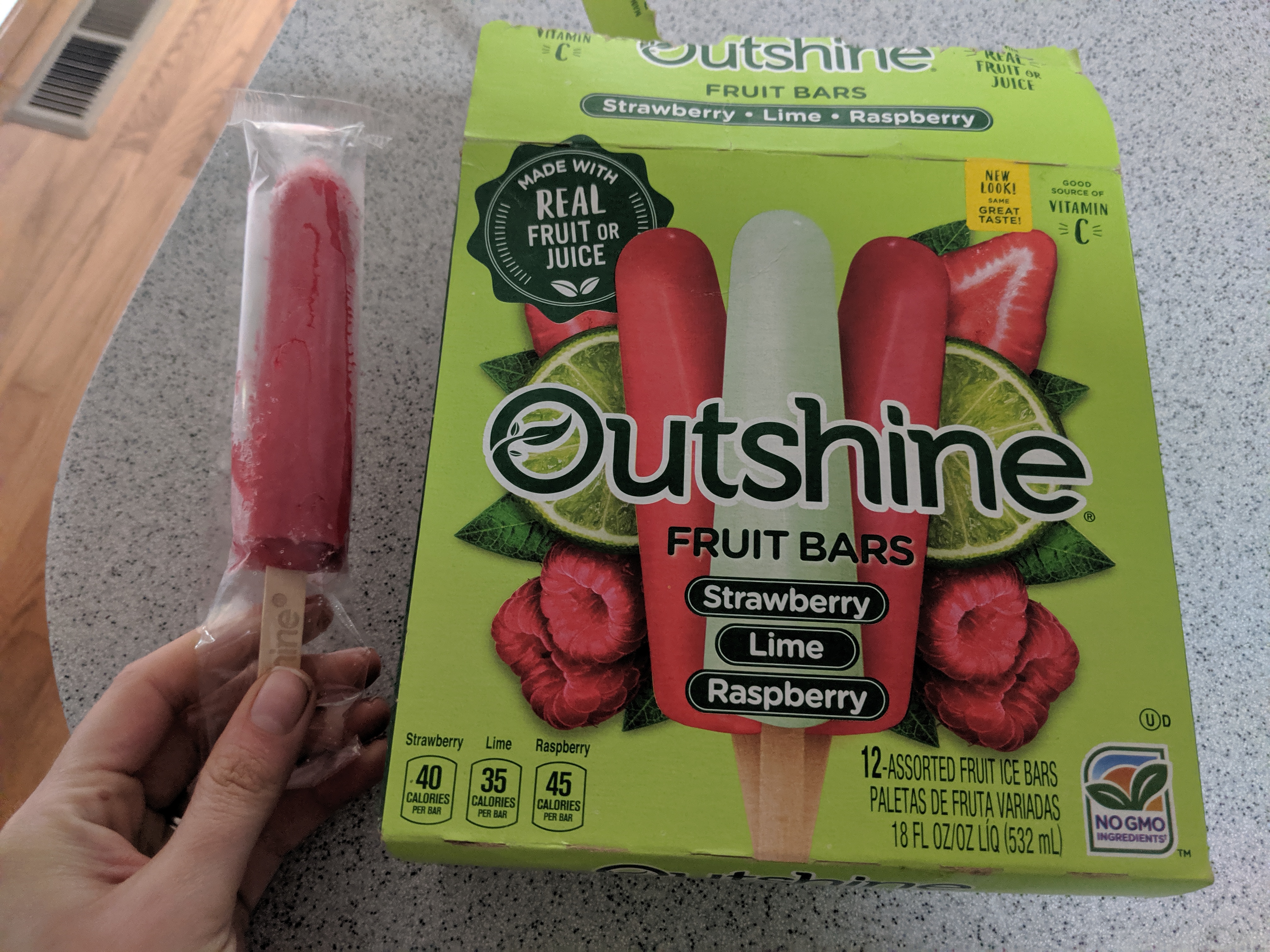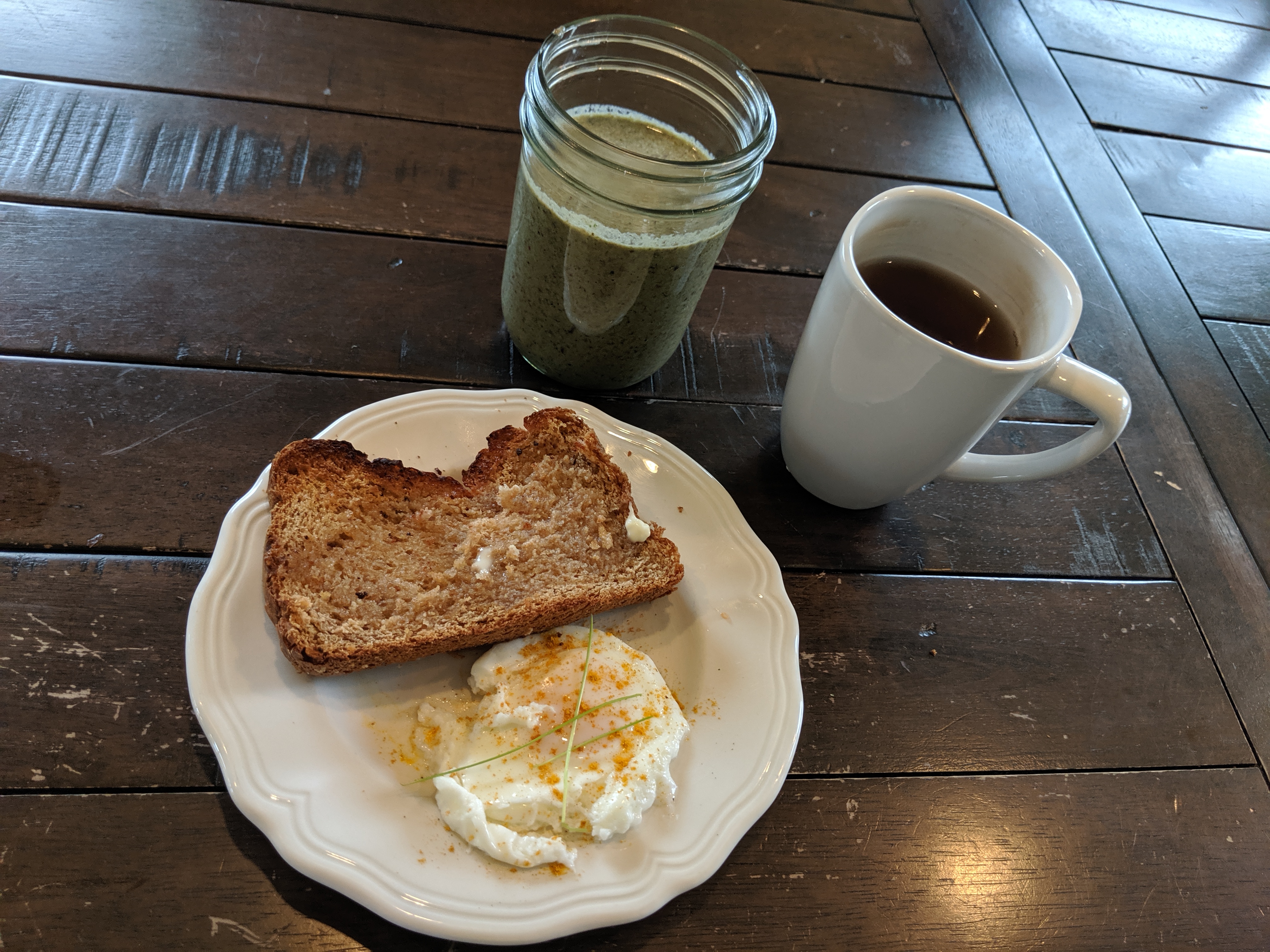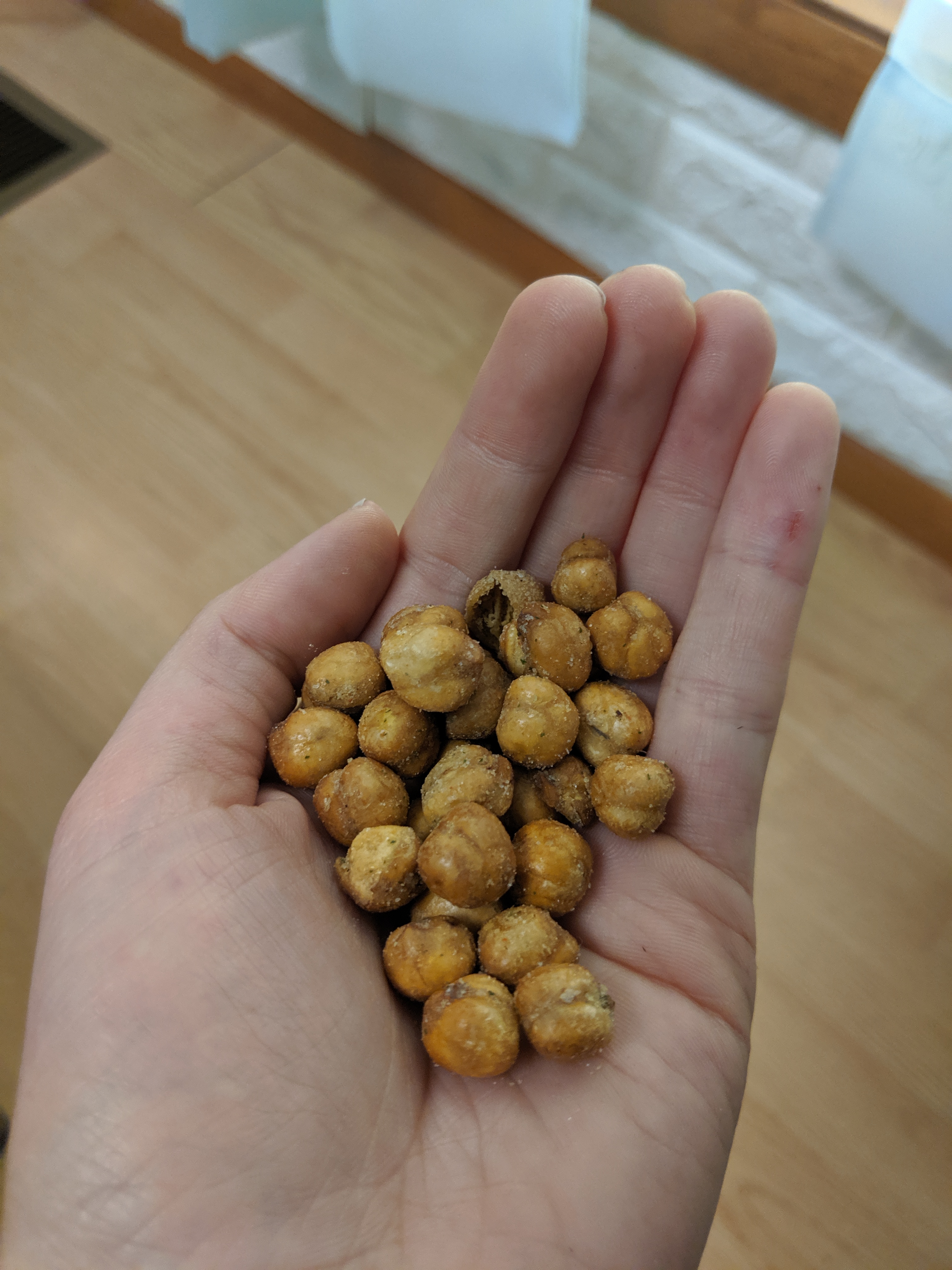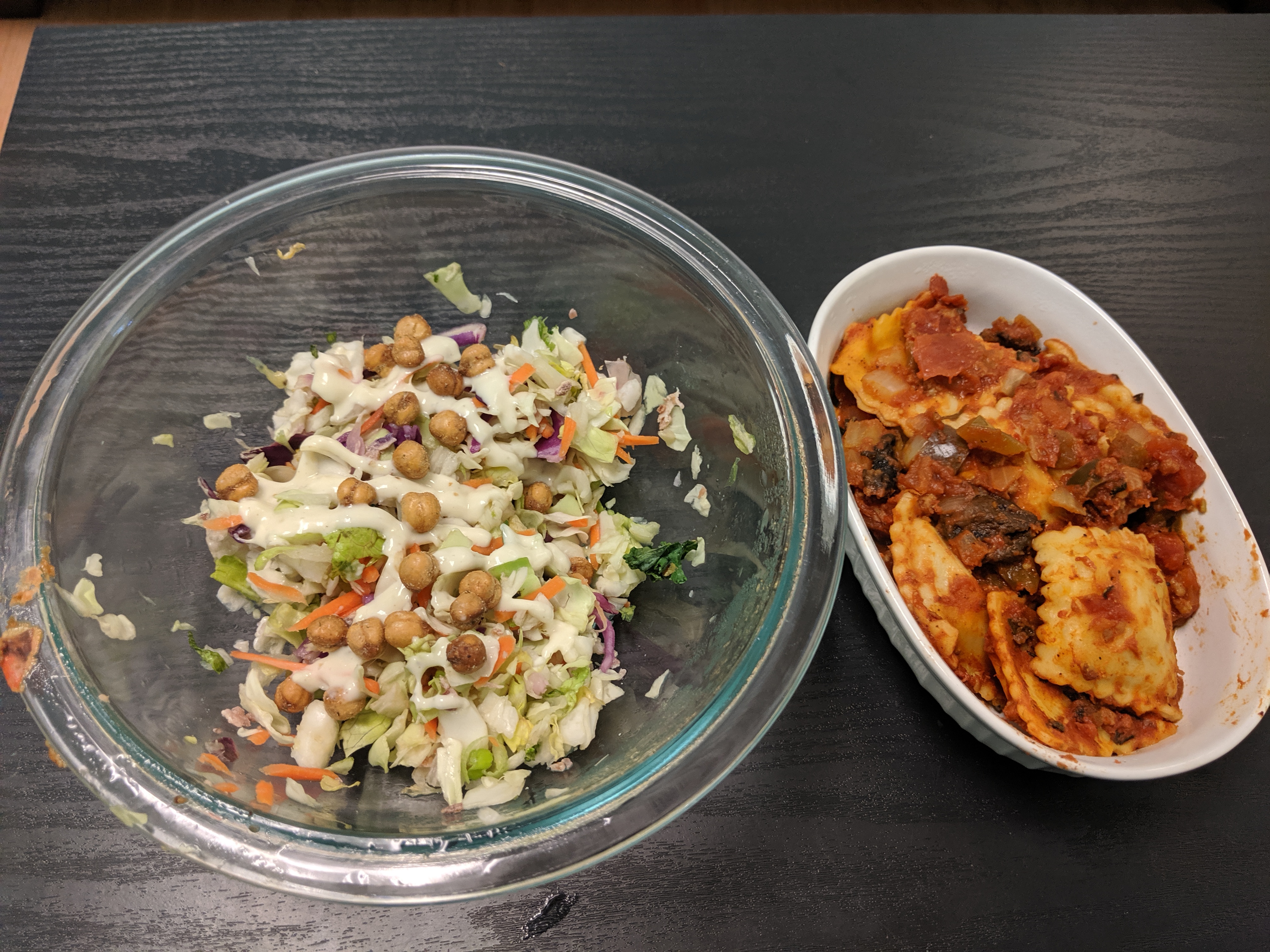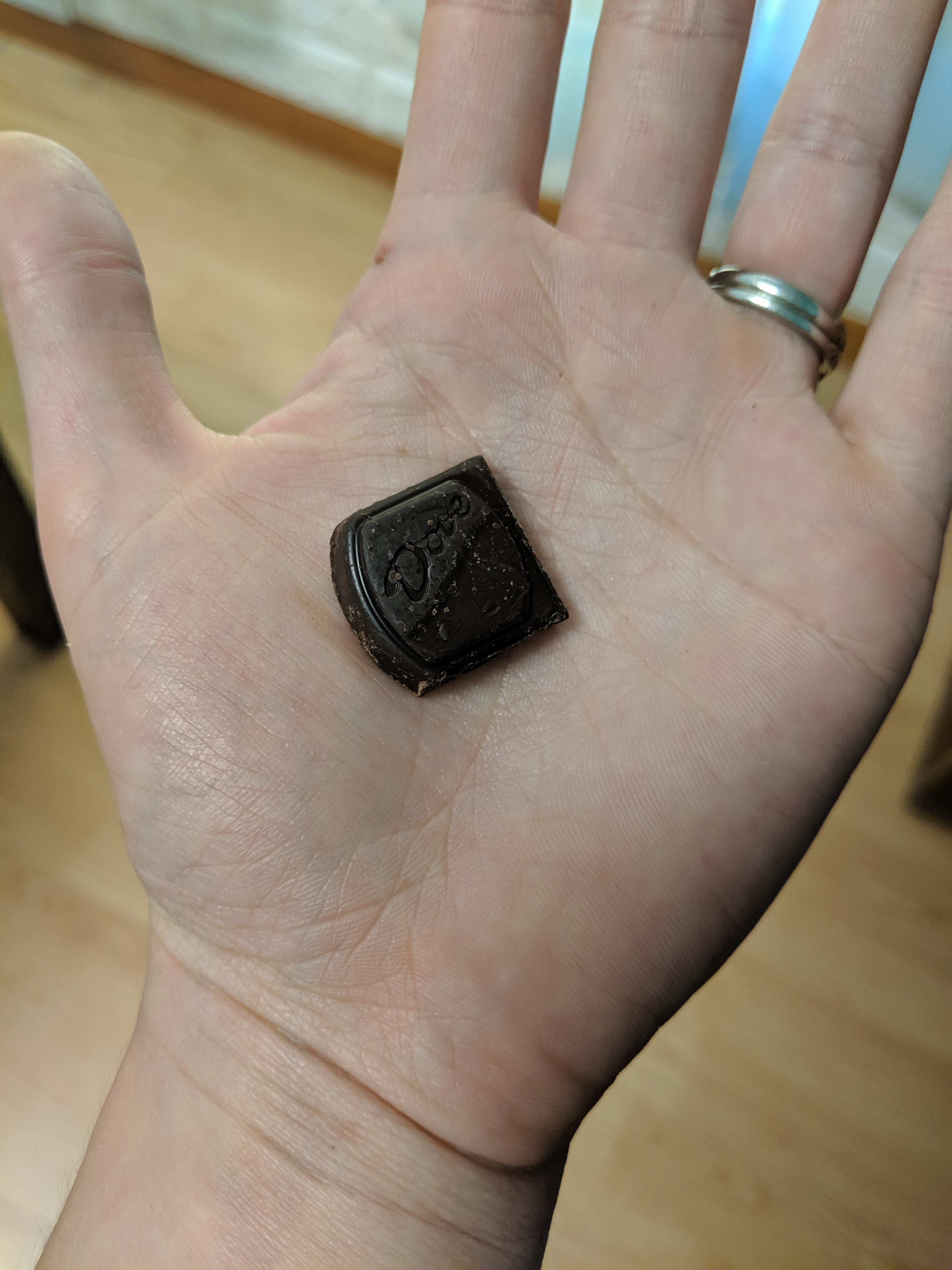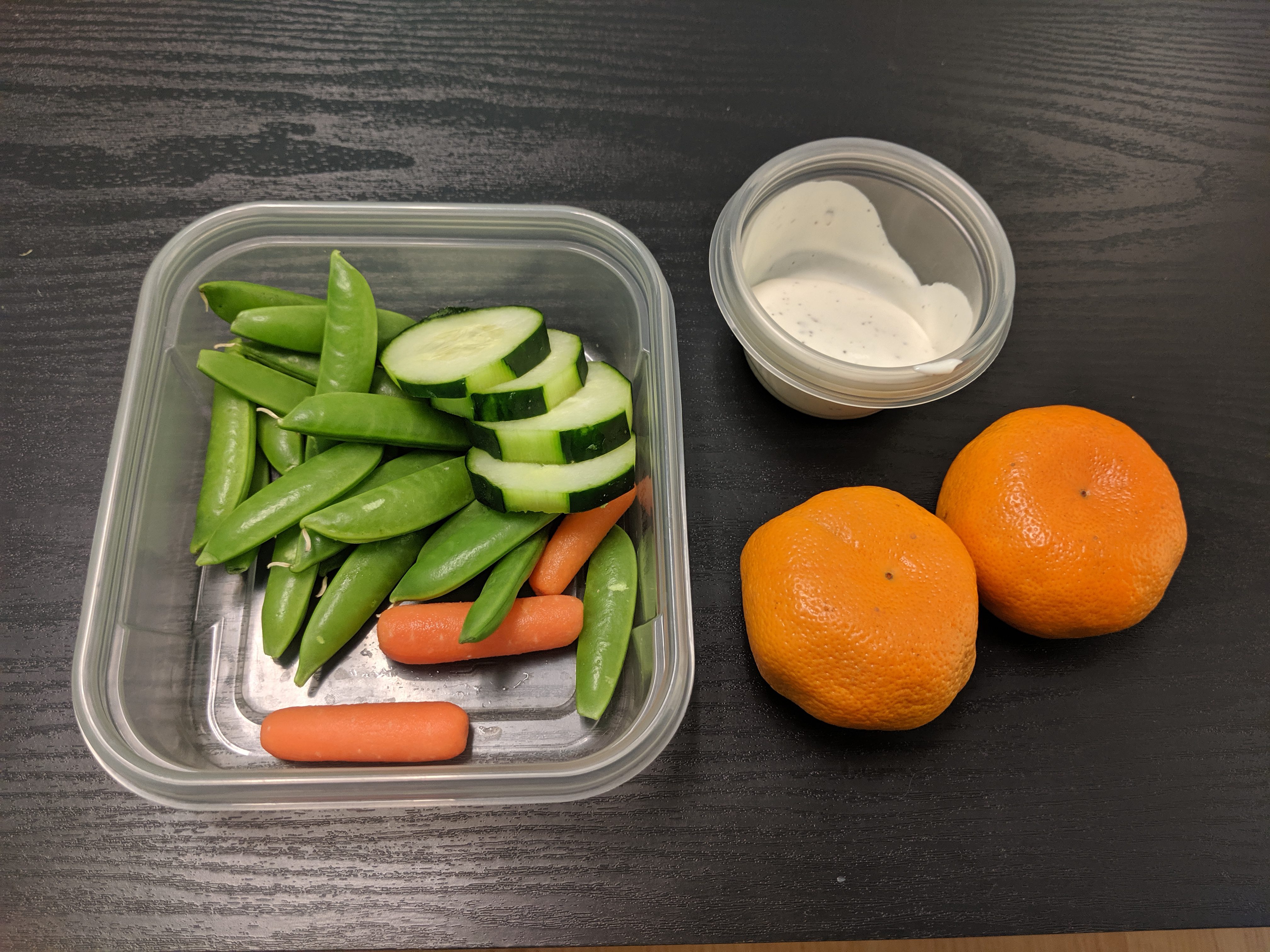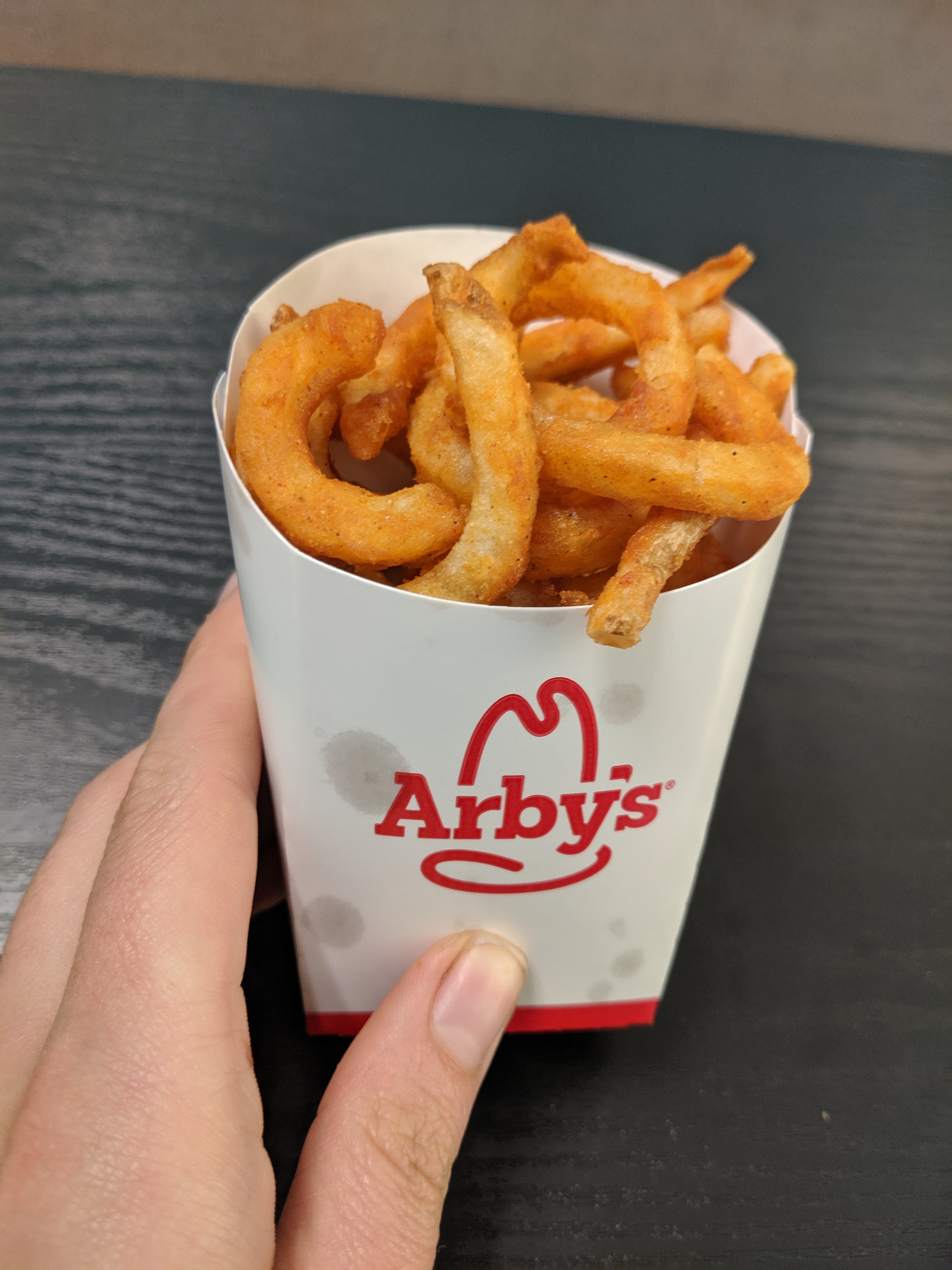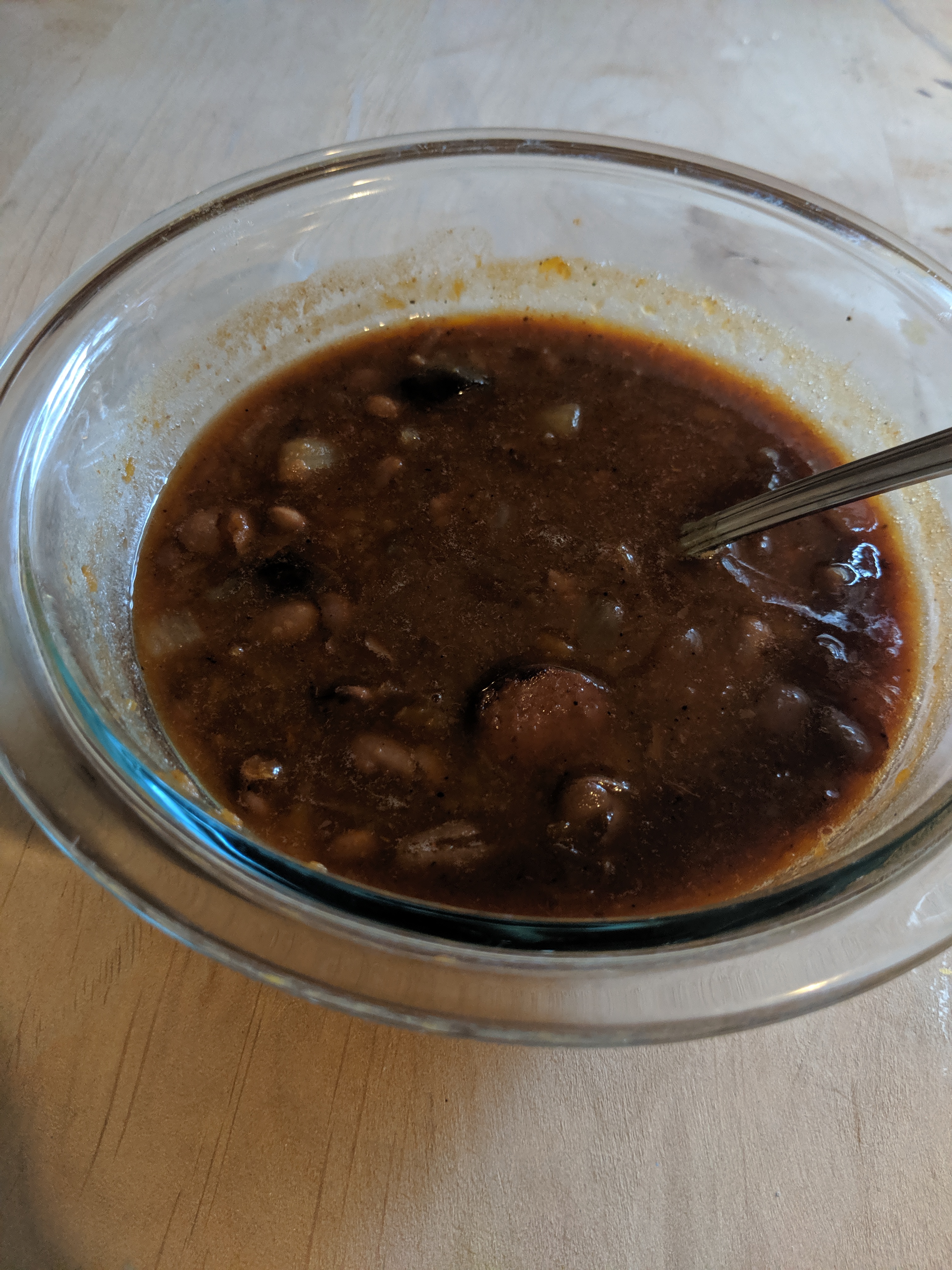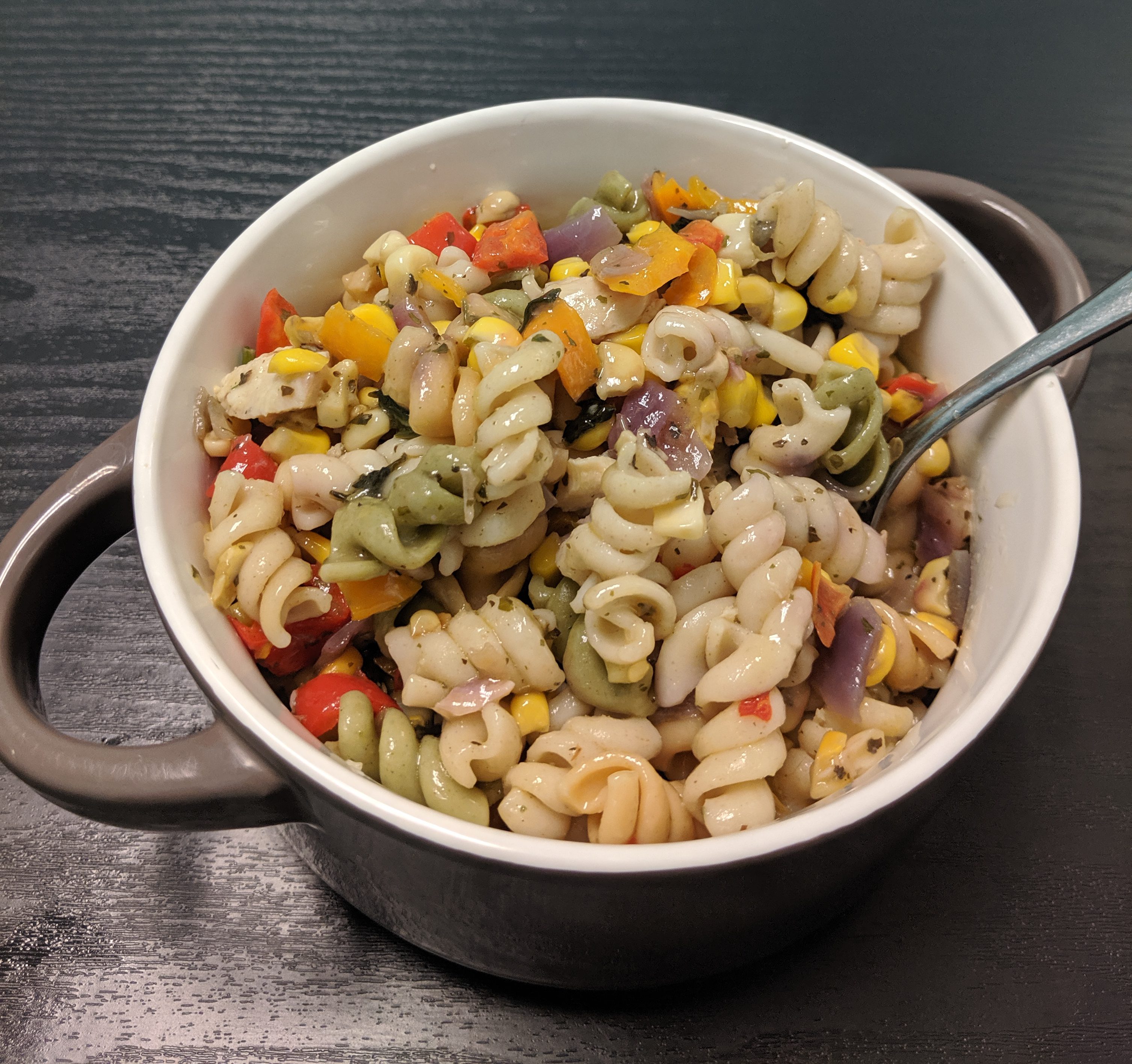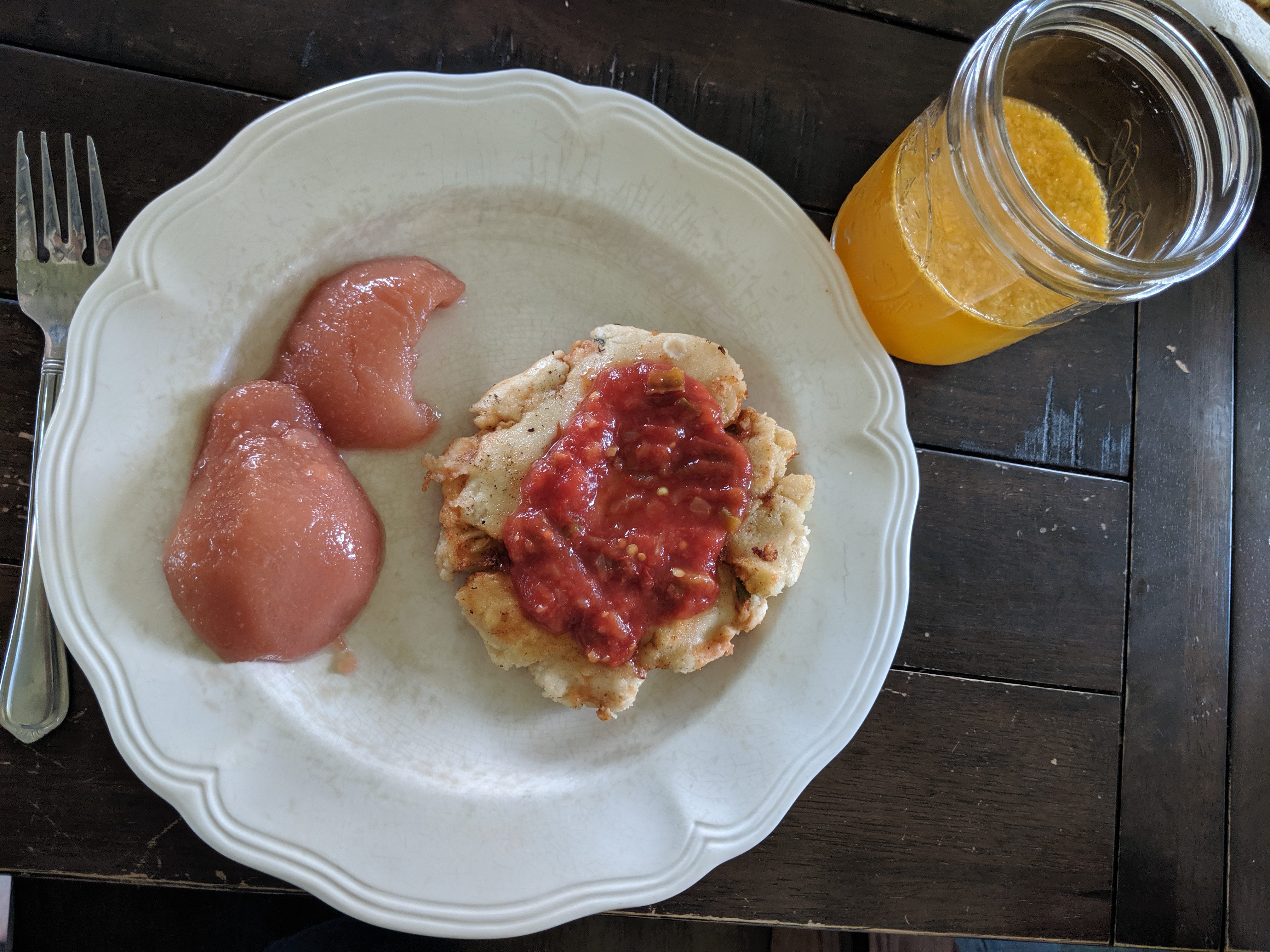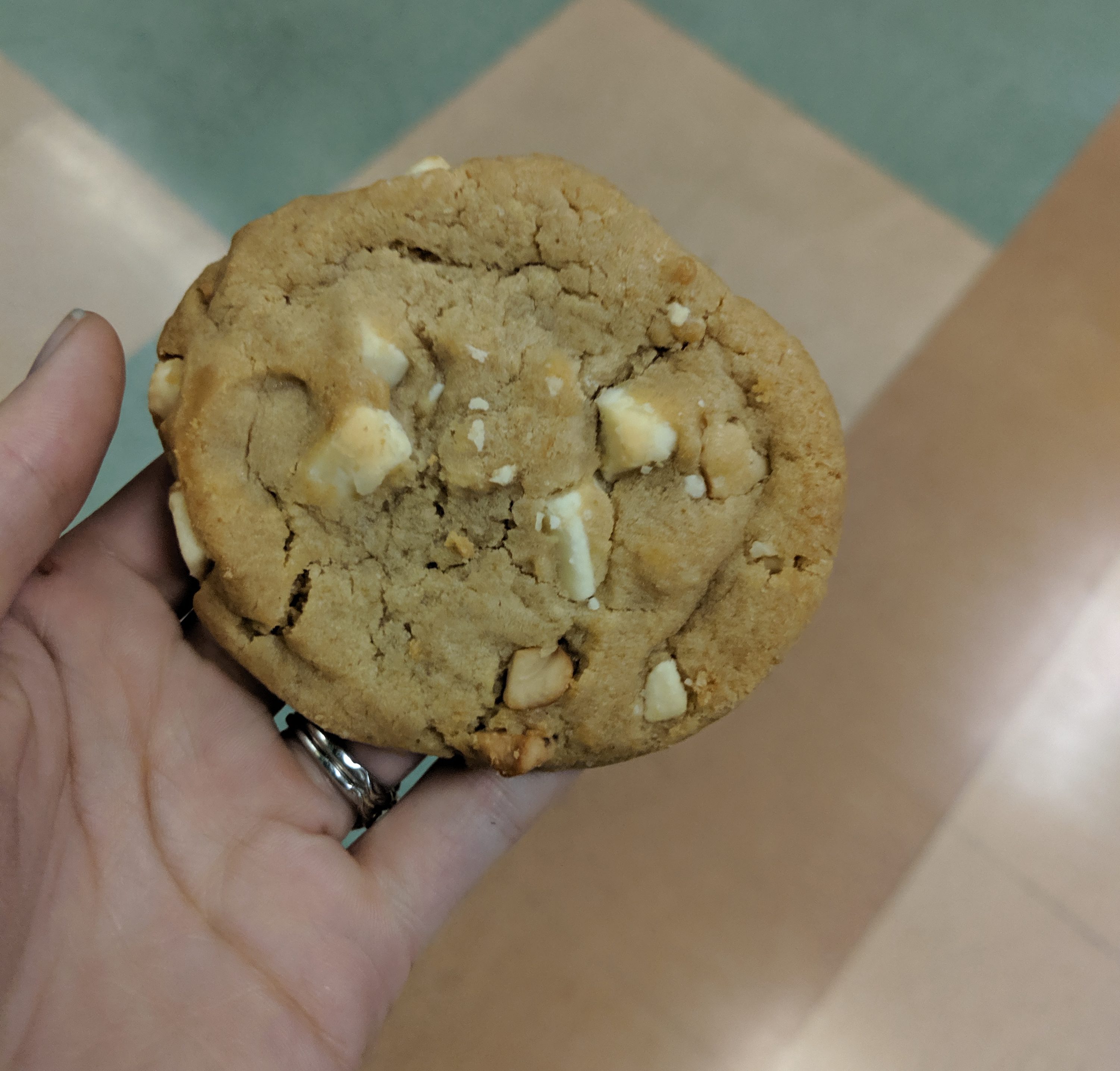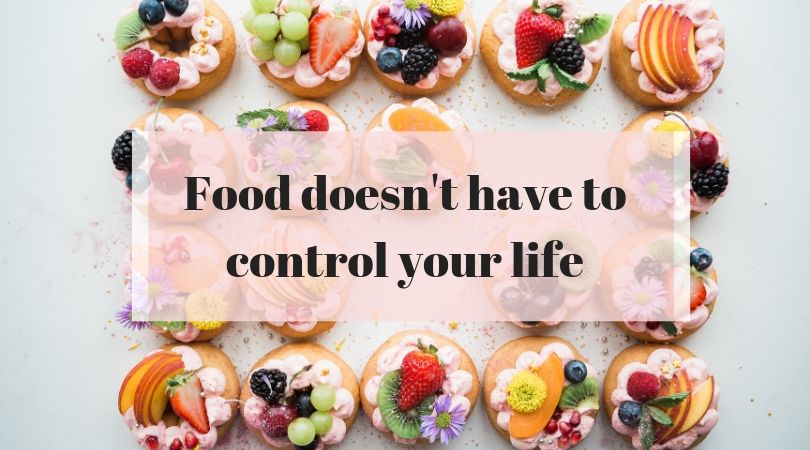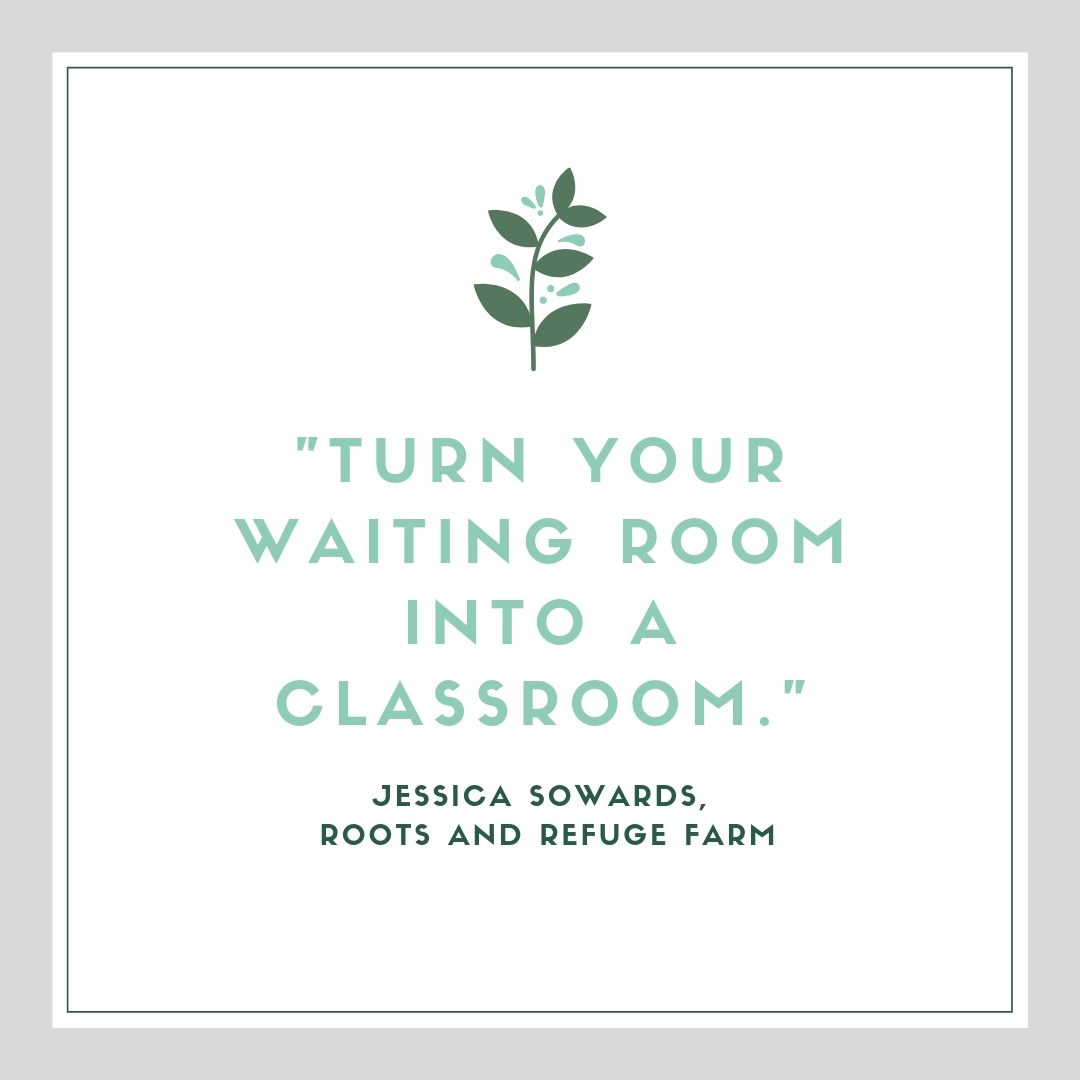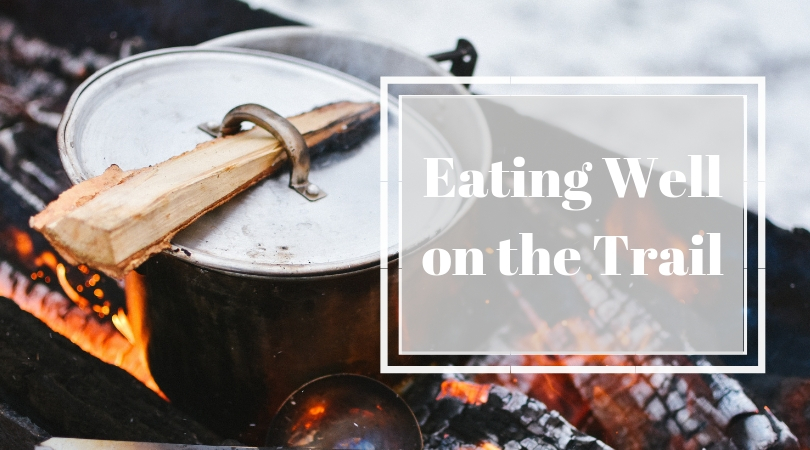Being married to a dietitian, my husband is often asked, “What does she eat? I bet she eats perfectly all the time!” He usually chuckles and tells them about my love for ice cream and all things salty, including tortilla chips with “plastic cheese” (you know, the liquid “cheese-like food product” you get from a high school football game concession stand? Mmmm…) Eating to feed both your body and your soul is important! If you what you eat most of the time is good for your body, then you can enjoy soul food sometimes without guilt or health consequences.
I thought I would take the opportunity to show you what one Registered Dietitian eats in a day…or rather, three days. I chose to include three days to give you a better average and to avoid the bias of a “perfect day” since I knew I would be recording it. As you read through this post, try not to compare my diet with yours. Everyone’s healthy looks different, and there is no one right way to eat! What matters is that what you eat works for your body, your life, your schedule, and your happiness. These days represent what works for me.
Day 1
7:00 am – The day started with a tropical smoothie that contained leftover banana and pineapple with some spinach, nonfat vanilla Greek yogurt, orange juice, and chia seeds. As always and of course, I had a cup of tea!
10:30 am – Mid-morning after a few hours of work, hunger set in and I had a piece of whole wheat toast with some spreadable butter.
12:35 pm – After my workout I was very ready for lunch! Lunch was a leftover mish-mash. A large salad with a salmon burger patty, sunflower seeds, croutons, and bleu cheese dressing. Clementine kombucha to drink!
1:30 pm – Not too long after lunch I realized that it hadn’t been quite enough and that I was needing a bit more in the way of carbohydrates for energy to get me through the afternoon. I had one of these marshmallow pies left over from our Memorial Day camping trip. It went peacefully.
6:30 pm – I gardened for a few hours and then I was ravenous! For dinner I made beef ravioli with marinara and sauteed mushrooms, onions, and spinach.
8:30 pm – While watching Captain America: Winter Soldier with my kids in the evening, I had one of these raspberry fruit juice popsicles. So delicious!
Day 2
7:15 am – We still had leftover pineapple, so I made another tropical smoothie with pineapple, leftover fruit salad, and spinach. I also made toast and a poached curried egg, so I didn’t add the Greek yogurt to the smoothie this time.
9:45 am – Snack time! In between appointments I nibbled on some roasted ranch flavored chickpeas for some carbohydrate and protein.
11:30 am – After seeing another client and doing a quick pilates workout, I ate the last of the leftover salad and the leftover ravioli from last night for lunch. I chased it with a square of Dove chocolate. Yum!
1:15 pm – Throughout the afternoon, I focused on blogging and admin work. I snacked on raw veggies w/light ranch dip and clementine oranges.
4:25 pm – Hunger set in and I still had one more client until dinner. I had exhausted the food I brought for the day, so I walked around the corner to Arby’s for some of their snack-sized curly fries. I. Love. Curly Fries.
7:15 pm – This particular night at our house is a “use up” night, so I get the night off from cooking and everyone eats their own thing. Tonight, I finished off some leftover homemade baked beans and butternut squash.
Day 3
7:35 am – Today I ate a bit of an unconventional breakfast. Today’s tropical smoothie included pineapple, 1/2 canned peach, spinach, orange juice, and milk. Alongside that was the rest of a half-eaten sandwich prepared by one of our boys and then abandoned. Poor sandwich. So I played garbage disposal today. 🙂 #momlife
12:30 am – I was running late to work and was busy seeing clients once I arrived, so I didn’t get a chance for my mid-morning snack. I was HUNGRY by lunch time. So hungry that I skipped my workout and went straight for food. Today, I ate some pasta salad that I doctored up with chicken, corn, and sauteed peppers and spinach. Once I started eating it, I realized that it didn’t have very much chicken in it, so I tossed in a handful of my roasted ranch chickpeas for some added protein.
5:30 pm – I ate a lot of pasta salad for lunch, so I never got hungry for my afternoon snack. Plus, we were eating an early dinner so we could get to my son’s band concert on time. For dinner, I made pupusas (a Salvadoran savory corn “pancake” with chicken, cheese, and refried beans). I topped mine with salsa and ate a couple of leftover spiced pears. More kombucha to drink!
9:30 pm – After the concert, they had cookie trays and I love me a good white chocolate macadamia nut cookie! So delicious.
So there you have it! Three pretty typical, if not unvarying, examples of days in my food life. In hindsight, I perhaps shouldn’t have chosen 3 days in a row simply because I eat a lot of leftovers so several things showed up repeatedly. For example, I don’t usually have a smoothie every morning, but I did for these three days since we had leftover pineapple we needed to use up.
Other than that, these days show the typical pattern that works for me: balanced healthful meals with a treat or two just about every day. I love the food that I eat. Having plenty of tasty healthful foods I love and not denying myself “unhealthful” delicious treats in moderation makes for a great and delicious balance. Let me know in the comments if you have any questions or ideas for other posts you would like to see!
You Might Also Enjoy
Why Eating Enough is Just as Important as Not Eating Too Much
Sugar Alternatives: Sweet Solution or Damaging and Dangerous?
What to do When Your Healthy Plan Falls Through

